Design of ventilation and deodorization system for sludge drying workshop in underground sewage trea
Date:2022.9.28 Hit:8457
Introduction
With the rapid development of cities, the number of sewage treatment plants and sewage treatment capacity have increased simultaneously [1], leading to a rapid increase in sludge volume. In the past, concentrated sludge was only treated to 80% moisture content through mechanical dewatering before relevant disposal, which poses serious problems such as secondary pollution that affect the sustainable development of cities. Taking Guangzhou as an example, the characteristics of municipal sludge in the central urban area are: high moisture content, low organic matter content, and seasonal variation; Parasite eggs, pathogenic microorganisms, and other pathogenic substances generally exceed the standard; The presence of heavy metals such as copper, zinc, and chromium in the sludge of some sewage treatment plants exceeds the standard; Containing recalcitrant organic compounds such as polychlorinated biphenyls. Therefore, it is necessary to properly treat and dispose of sludge to avoid secondary pollution and meet the requirements of reducing, stabilizing, and harmless sludge treatment and disposal. As early as the 13th Five Year Plan period, the country set an assessment goal for relevant key cities to achieve a 100% harmless sludge treatment and disposal rate by the end of 2015. For this purpose, key cities have conducted special studies on the subsequent disposal of municipal sludge, pointing out that sludge with a moisture content of 30% to 40% can be used as materials for cement production, backfill soil, and unburned bricks; Sludge containing certain organic matter can be used for incineration and other heat treatment to generate heat energy; Sludge that meets heavy metal standards can also be used as substrate soil for cultivating plants in forestry.
Considering the characteristics of sludge with different moisture contents and the requirements for the quality of sludge produced by various sewage treatment plants, it is appropriate to treat sludge in the plant to a moisture content of 30% to 40%, and use this as the goal for the technological upgrading and renovation of sludge treatment facilities in the construction and expansion of sewage treatment plants. In 2010, Guangzhou built and put into operation the first fully underground membrane bioreactor sewage treatment plant in China, pioneering the field of underground sewage treatment plants and continuously leading the way in this field П The handling of the handle is as follows: А This article introduces the implementation of ventilation and deodorization systems for sludge drying workshops in 8 underground sewage treatment plants in a certain village.
Analysis of key and difficult points in the ventilation and deodorization system of sludge drying workshop and corresponding measures
The underground sludge drying workshop has the following key issues during the sludge drying process:
1) Dust is easily generated during the drying and transportation process of sludge, especially during loading when the dust particles are small and the concentration is high. If the design is not well considered or the operation management is not standardized, dust will escape into the air and deposit on the ground and equipment surface under the action of gravity. Over time, the deposited dust will become a source of odor pollution, continuously emitting a foul odor.
2) Sludge drying is generally achieved through high-temperature (above 150 ℃) heating or low-temperature vacuum drying. Regardless of the drying process used, the temperature on the outer surface of the drying equipment is much higher than the indoor air temperature. Although sludge drying equipment is usually equipped with insulation materials, there are still defects such as insufficient thickness and incomplete insulation of the insulation materials, leading to a continuous transfer of heat from the drying equipment to the operating workshop.
-
 Application of Membrane Structure in Rail Transit...
Application of Membrane Structure in Rail Transit... -
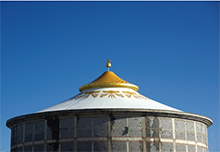 Application of Thermal Insulation Lining Technology in Membrane Archit...
Application of Thermal Insulation Lining Technology in Membrane Archit... -
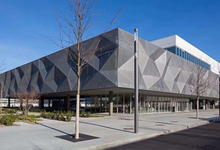 Application of membrane curtain wall...
Application of membrane curtain wall... -
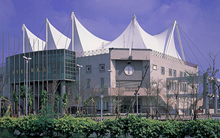 Application of Membrane Roofing...
Application of Membrane Roofing... -
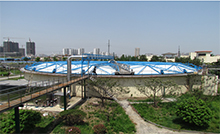 Application of Membrane Structure in Environmental Protection Engineer...
Application of Membrane Structure in Environmental Protection Engineer... -
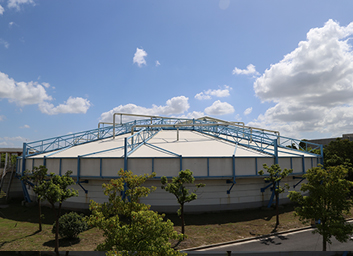 Application of Membrane Structure in Sewage Treatment Plant...
Application of Membrane Structure in Sewage Treatment Plant...

